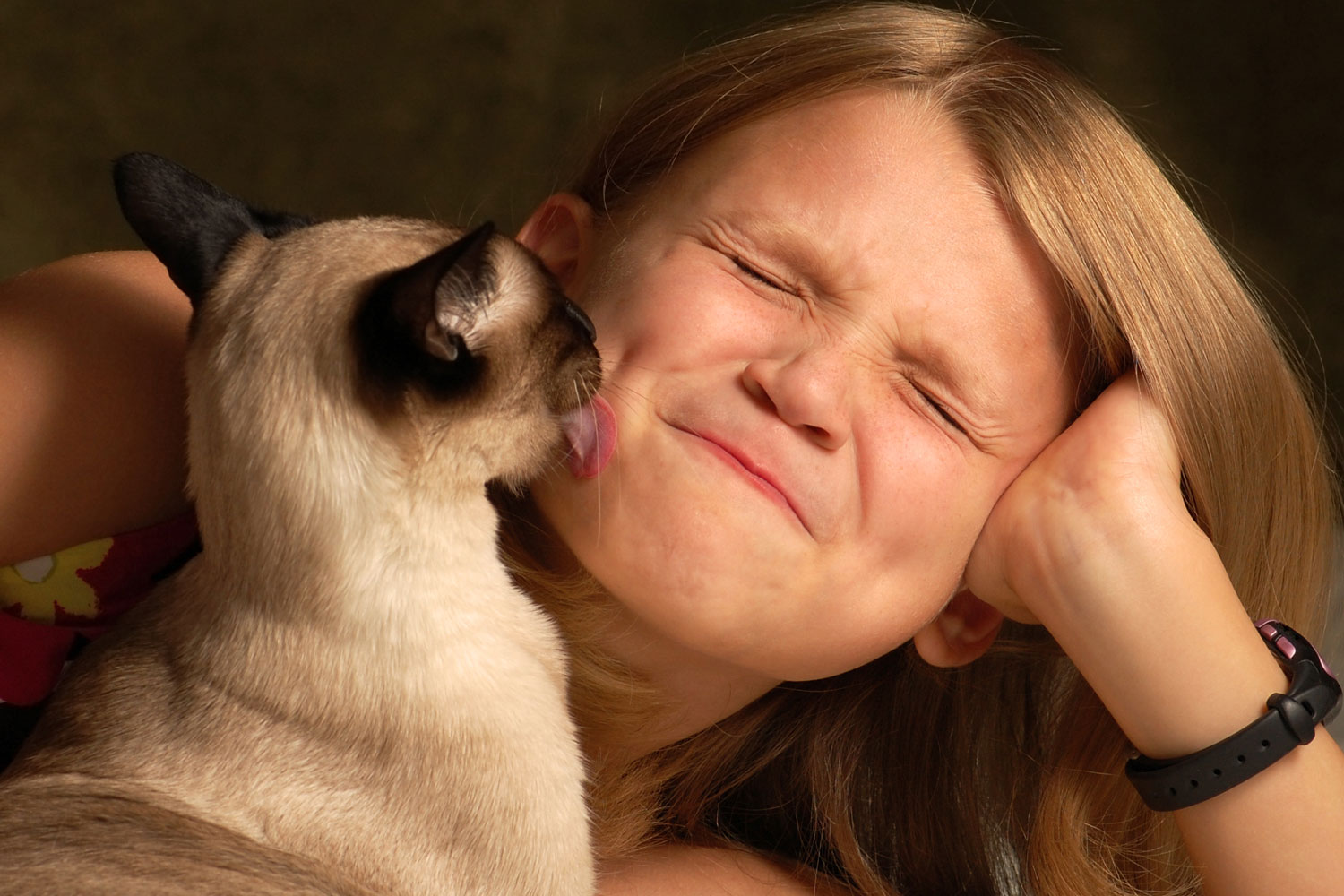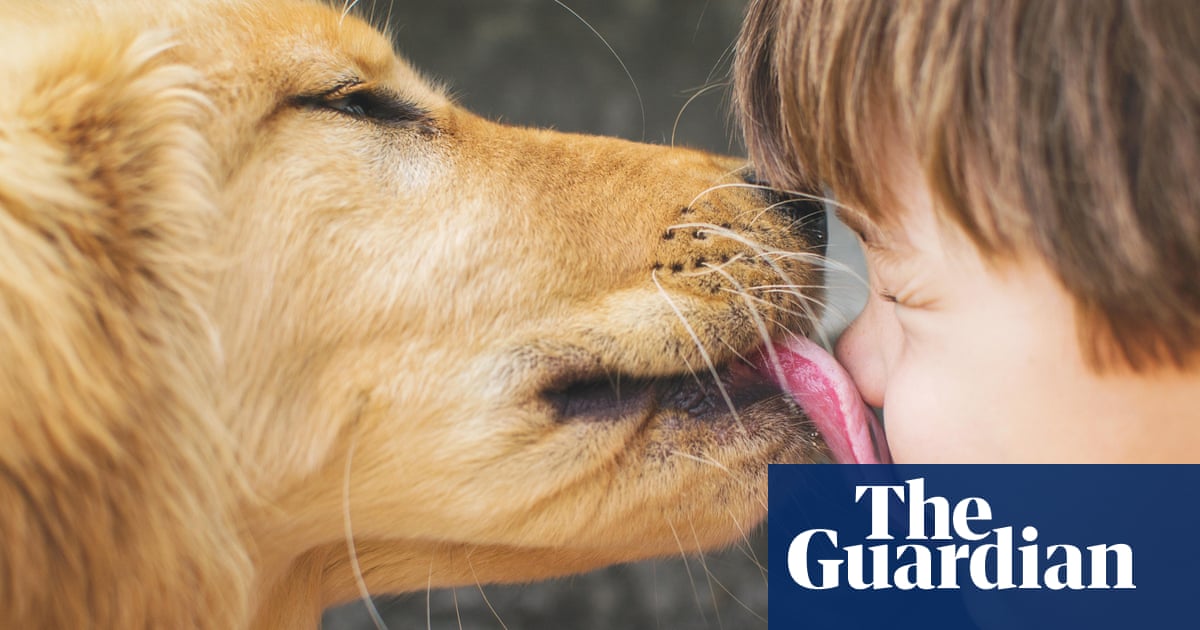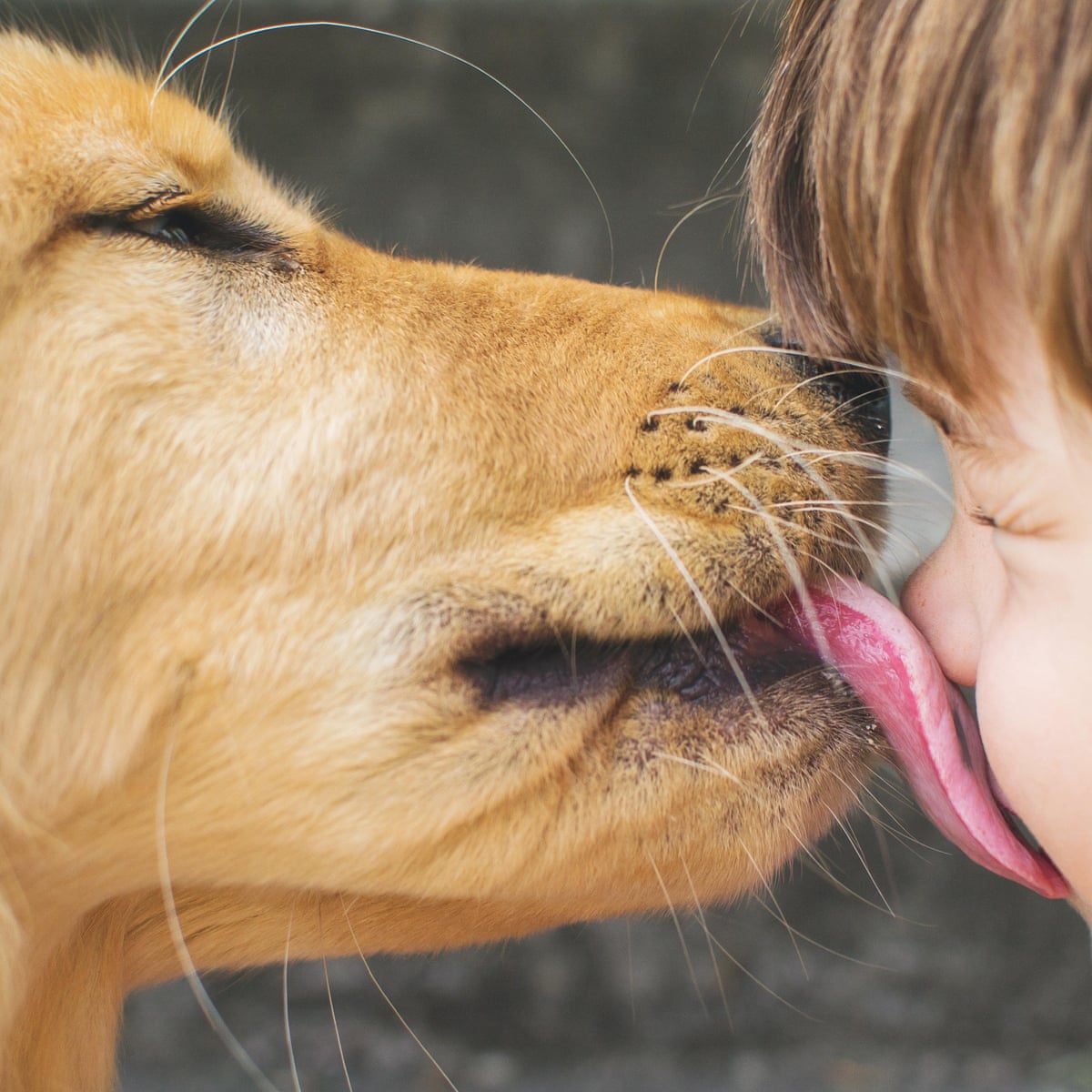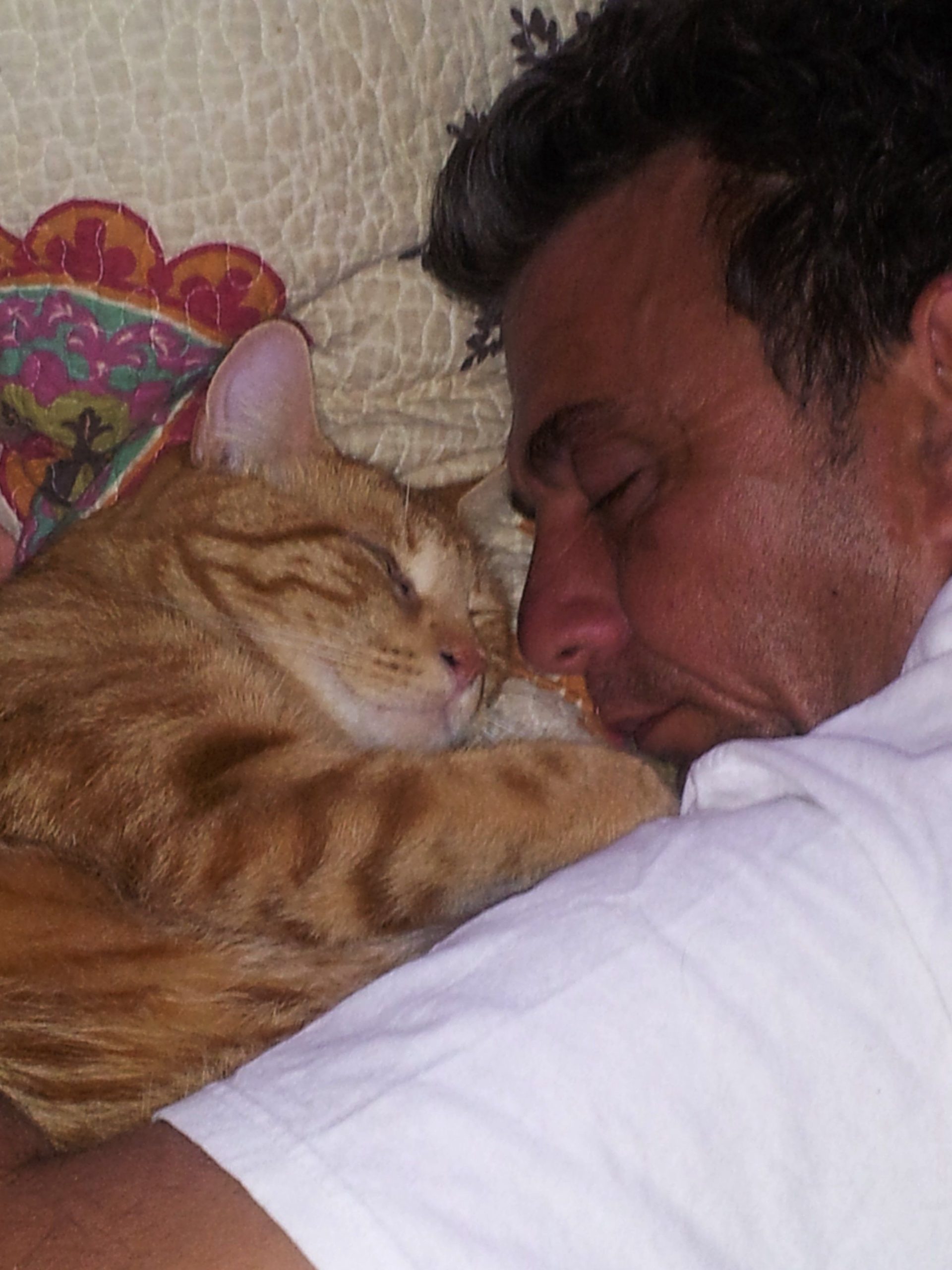Contents
- I. Introduction
- II. The Dangers of Letting Your Cat Lick Your Face
- III. Why Cats Lick Faces
- IV. Health Risks Associated with Cat Licking
- V. Frequently Asked Questions about Cats Licking Faces
- 1. Why do cats lick faces?
- 2. Is it safe to let my cat lick my face?
- 3. Can cats transmit diseases through licking?
- 4. Why does my cat lick my face after eating?
- 5. How can I prevent my cat from licking my face?
- 6. Are there any benefits to cats licking faces?
- 7. Why does my cat lick my face when I’m sleeping?
- 8. Should I let my cat lick my baby’s face?
- VI. How to Prevent Your Cat from Licking Your Face
- VII. Benefits of Bonding with Your Cat in Other Ways
- VIII. Alternatives to Cat Licking for Affection
I. Introduction

Many cat owners have wondered whether it is safe to let their feline friends lick their faces. While some find it endearing and a sign of affection, others are concerned about the potential risks involved. In this article, we will explore the topic of whether or not it is advisable to allow your cat to lick your face.
The Bond Between Cats and Humans
Cats have been domesticated for thousands of years and have developed a unique bond with humans. They are known for their independent nature but also for their ability to form deep connections with their owners. Cats often show affection through various behaviors, and licking is one way they express their love and trust.
Potential Health Risks
While the act of a cat licking your face may seem harmless, there are a few health considerations to keep in mind. Firstly, cats have bacteria in their mouths, which can be transferred to humans through licking. This can potentially lead to infections or allergic reactions, especially for individuals with compromised immune systems.
Fleas and ticks can also be transmitted from your cat’s mouth to your face, posing a risk for infestations or the spread of diseases. Furthermore, if your cat has recently consumed something toxic or harmful, it could be transferred to your skin through licking.
Personal Preference and Hygiene
Allowing your cat to lick your face ultimately comes down to personal preference and hygiene practices. If you are comfortable with the idea and take necessary precautions, such as keeping your cat’s vaccinations up-to-date and ensuring regular flea treatments, the risks can be significantly minimized.
However, if you have concerns about potential health issues or prefer to maintain stricter hygiene standards, it may be best to avoid letting your cat lick your face. There are many other ways to bond and show affection with your furry companion that do not involve direct contact with their saliva.
Conclusion
II. The Dangers of Letting Your Cat Lick Your Face

While it may seem cute and endearing to let your cat lick your face, there are several potential dangers associated with this behavior. It’s important to understand the risks involved to ensure the health and safety of both you and your feline friend.
Cause of Infection
Cats are known to carry bacteria in their mouths, and when they lick your face, they can transfer these bacteria to your skin. This can lead to various infections, such as bacterial or fungal infections. These infections can cause redness, swelling, and discomfort, and in some cases, may require medical treatment.
Allergies and Skin Reactions
Some people may be allergic to cat saliva, and when their cat licks their face, it can trigger allergic reactions. These reactions can range from mild symptoms, such as itching and sneezing, to more severe reactions, including difficulty breathing or swelling of the face. Additionally, for individuals with sensitive skin, the enzymes present in cat saliva can cause irritation and rashes.
Transmission of Parasites
Cats can harbor various parasites, such as fleas and ticks, which can be transferred to humans through licking. These parasites can cause discomfort and may transmit diseases, such as Lyme disease or Bartonella infection. It’s essential to keep your cat protected from parasites and avoid direct contact with these potential disease carriers.
Unwanted Behaviors Reinforcement
Allowing your cat to lick your face may reinforce unwanted behaviors. Cats use licking as a way to mark their territory or show affection. By letting them lick your face, you are inadvertently encouraging this behavior. This can become problematic if your cat starts to exhibit excessive licking or becomes possessive over you.
Injury Risk
Cats have rough tongues that are designed for grooming purposes. While this is harmless when they groom themselves or other cats, it can be painful or even injurious when directed towards human skin. The abrasive texture of their tongues can cause scratches, scrapes, or even small cuts on delicate facial skin.
III. Why Cats Lick Faces

When it comes to cats displaying their affection, licking faces is a behavior that often perplexes their human companions. This seemingly odd behavior has both biological and social reasons behind it.
The Bonding Ritual
Cats, as social creatures, use grooming as a way to strengthen their bond with their loved ones. By licking your face, your feline friend is essentially treating you as one of their own. In the feline world, grooming is an intimate act that promotes trust and togetherness.
Marking Territory
Cats have scent glands located on their tongues, which means that when they lick your face, they are also marking you as part of their territory. By leaving their scent on you, they are essentially claiming you as their own and showing other cats that you belong to them.
Seeking Attention
Cats are astute observers of human behavior, and they have learned that licking faces often elicits a positive response from their owners. By showering you with their affection, they are seeking attention and reinforcing the bond they share with you.
Instinctual Behavior
In the wild, grooming plays a crucial role in feline social dynamics. By grooming each other, cats establish a hierarchy within their social groups. When a cat licks your face, it could be a display of their instinctual behavior, signaling that they see you as part of their social circle.
Exploring Taste and Texture
Cats are curious creatures, and licking your face may be their way of exploring new tastes and textures. Your skin might have an interesting scent or a lingering trace of something they find intriguing. It’s their way of satisfying their curiosity and engaging with their environment.
While some people find it endearing, others may not appreciate their cats licking their faces due to hygiene concerns. It’s important to establish boundaries and train your cat to understand what behaviors are acceptable. If you are uncomfortable with face licking, redirect their attention towards other forms of affection, such as playing or petting.
Understanding why cats lick faces can help strengthen the bond between you and your feline companion. Remember, every cat is unique, and their behaviors may vary. Pay attention to their body language and communication cues to foster a loving and trusting relationship.
IV. Health Risks Associated with Cat Licking

Cat licking is a common behavior that many cat owners find endearing. However, it is important to be aware of the potential health risks associated with this behavior. While cat saliva has some beneficial properties, such as antimicrobial compounds, there are also certain factors that can pose risks to human health.
Allergies and Sensitivities
One of the main health risks of cat licking is the potential for allergies and sensitivities. Cat saliva contains proteins that can trigger allergic reactions in some individuals. These reactions can range from mild symptoms like sneezing and itching to more severe reactions such as difficulty breathing. If you notice any allergic symptoms after being licked by your cat, it is advisable to consult with a healthcare professional.
Bacterial Infections
Another concern with cat licking is the transfer of bacteria from the cat’s mouth to the human skin. Cats are known to groom themselves by licking, and their mouths can harbor various bacteria. While most of these bacteria are harmless to cats, they can potentially cause infections in humans, especially if there are any open wounds or compromised skin. It is important to keep an eye on any signs of infection, such as redness, swelling, or pain, and seek medical attention if necessary.
Parasitic Infections
Cats can also carry parasites that can be transmitted through licking. One common parasite is Toxoplasma gondii, which can cause toxoplasmosis in humans. While healthy individuals may not experience any symptoms, pregnant women and individuals with weakened immune systems are more susceptible to complications from toxoplasmosis. It is important to take precautions if you are pregnant or have a compromised immune system, such as avoiding direct contact with cat saliva and ensuring proper hygiene.
Behavioral Issues
In some cases, allowing your cat to lick your face can reinforce undesirable behaviors. Cats may associate face licking with positive attention and may continue the behavior excessively. This can lead to problems such as over-grooming, hair loss, and skin irritation. It is important to establish boundaries and redirect your cat’s attention to more appropriate behaviors, such as interactive play or petting.
Precautions and Safety Measures
To minimize the health risks associated with cat licking, it is recommended to practice good hygiene. Wash your hands thoroughly after interacting with your cat, especially before handling food or touching your face. Regularly clean your cat’s litter box and provide appropriate grooming tools to discourage excessive licking. If you have concerns about your cat’s health or behavior, consult with a veterinarian for guidance.
V. Frequently Asked Questions about Cats Licking Faces

As a cat owner, you may have wondered about the strange behavior of your furry friend licking your face. While it can be adorable and endearing, it’s natural to have some concerns or questions. Here are some frequently asked questions about cats licking faces:
1. Why do cats lick faces?
Cats have a unique way of showing affection, and licking is one of their behaviors to express love. Licking your face is a sign of trust and closeness. It’s their way of bonding with you and marking you as part of their territory.
2. Is it safe to let my cat lick my face?
While it is generally safe for your cat to lick your face, you should be cautious. Cats’ tongues have tiny barbs that can cause minor scratches or irritations. If you have any open wounds or sensitive skin, it’s best to avoid letting your cat lick your face to prevent any potential infections.
3. Can cats transmit diseases through licking?
The risk of disease transmission through cat licking is relatively low. However, it’s essential to maintain good hygiene practices. Cats can carry certain bacteria in their mouths, such as Pasteurella, which can cause infections in humans. If you have a compromised immune system, it’s advisable to avoid face licking.
4. Why does my cat lick my face after eating?
Cats may lick your face after eating as a way to show their gratitude or to share their meal with you. It’s their instinctual behavior to groom their loved ones and establish a sense of belonging.
5. How can I prevent my cat from licking my face?
If you find your cat’s face licking excessive or uncomfortable, you can train them to redirect their behavior. Offer them alternative ways to show affection, such as petting or playing. You can also gently discourage face licking by providing a distraction or moving away when they try to lick your face.
6. Are there any benefits to cats licking faces?
Yes, there can be some benefits to cats licking faces. Licking releases endorphins in cats, promoting their sense of well-being and reducing stress. It can also enhance the bond between you and your cat, strengthening your relationship.
7. Why does my cat lick my face when I’m sleeping?
Cats may lick your face while you’re sleeping as a way to wake you up or get your attention. They might be seeking affection or simply trying to engage with you. However, if it becomes disruptive to your sleep, you can gently discourage this behavior by redirecting them to their own space.
8. Should I let my cat lick my baby’s face?
It’s best to avoid letting your cat lick your baby’s face. Babies have delicate immune systems, and their skin is more sensitive. It’s crucial to ensure their safety and prevent any potential risks of infections. Supervise interactions between your cat and baby to maintain a safe environment.
Remember, every cat is unique, and their licking behavior may vary. If you have any concerns or questions about your cat’s behavior, it’s always a good idea to consult with your veterinarian for professional advice.
VI. How to Prevent Your Cat from Licking Your Face
Cats are known for their grooming habits, and while it may seem endearing to have your furry friend lick your face, there are certain concerns you should be aware of. If you prefer to prevent your cat from licking your face, here are a few effective strategies you can try:
1. Redirect their attention
When your cat starts showing signs of wanting to lick your face, gently redirect their attention to a more appropriate behavior. Offer them a toy to play with or engage them in interactive playtime to redirect their grooming instincts.
2. Use deterrent scents
Cats have a strong sense of smell, and certain scents are known to deter them from unwanted behaviors. Consider using citrus-scented products or essential oils like lemon or orange around your face to discourage your cat from licking.
3. Provide alternative grooming options
Your cat may be licking your face as a way of bonding or showing affection. Provide them with alternative ways to groom and bond with you, such as brushing them with a soft brush or offering gentle petting sessions.
4. Train with positive reinforcement
Positive reinforcement training can be a useful tool in teaching your cat appropriate behaviors. Whenever your cat refrains from licking your face, reward them with praise, treats, or a favorite toy. This will reinforce the idea that not licking your face is a desirable behavior.
5. Keep your face clean and moisturized
If your cat associates your face with a pleasant taste or scent, they may be more inclined to lick it. Keep your face clean and moisturized to remove any residual food or scent that might attract your cat’s attention.
6. Establish boundaries and be consistent
Cats thrive on routine and clear boundaries. Consistently reinforce the rule that licking your face is not allowed by gently removing your cat from your lap or redirecting their attention whenever they try to lick your face. Over time, they will understand and respect these boundaries.
Remember, every cat is different, and what works for one may not work for another. Be patient and experiment with different strategies until you find the most effective one for your furry friend. By setting boundaries and redirecting their behavior, you can still enjoy a loving relationship with your cat without having them lick your face.
VII. Benefits of Bonding with Your Cat in Other Ways
Bonding with your cat goes beyond just letting them lick your face. While face licking can be a sign of affection, there are other ways to strengthen the bond with your feline friend. These alternative bonding methods can provide numerous benefits for both you and your cat.
1. Playtime
Engaging in playtime activities with your cat is an excellent way to build a strong bond. Use interactive toys such as feathers, laser pointers, or even simple balls to stimulate their natural hunting instincts. The act of playing together not only provides mental and physical stimulation for your cat but also creates a sense of trust and companionship between you.
2. Grooming
Grooming your cat not only helps to keep them clean and healthy but also offers an opportunity for bonding. Use a soft brush or comb to gently groom their fur, paying attention to their favorite spots. This grooming session can be a soothing and relaxing experience for both you and your cat, strengthening your connection.
3. Quality Time Together
Dedicating uninterrupted quality time to your cat is crucial for building a deep bond. Set aside specific times in your day to simply be present with your cat. Sit with them, stroke their fur, and engage in gentle petting. This focused attention and physical contact will make your cat feel loved and cherished.
4. Learning New Tricks
Cats are curious and intelligent creatures. Teaching them new tricks or commands can be a fun and rewarding bonding experience. Whether it’s teaching them to sit, give a paw, or jump through hoops, the training process allows you to interact with your cat in a positive and constructive way. Plus, it mentally stimulates them and strengthens the trust and communication between you both.
5. Exploring the Outdoors
If your cat is comfortable with supervised outdoor adventures, taking them on walks or providing a secure outdoor space can enhance your bond. Allow your cat to explore their surroundings while keeping them safe. The shared experience of discovering new sights, smells, and sounds together can create a sense of adventure and deepen your connection.
By incorporating these alternative bonding methods into your relationship with your cat, you can strengthen the bond, promote their overall well-being, and create a harmonious and loving environment for both of you.
VIII. Alternatives to Cat Licking for Affection
While it’s tempting to let your cat lick your face as a sign of affection, there are alternative ways to bond with your feline friend that are both safe and enjoyable for both of you.
1. Playful Interactions
Cats love to play, and engaging in interactive playtime with your cat is a great way to strengthen your bond. Use toys like feather wands or laser pointers to stimulate your cat’s natural hunting instincts. This not only provides mental and physical stimulation for your cat but also allows you to spend quality time together.
2. Grooming Sessions
Instead of allowing your cat to lick your face, try grooming sessions as a bonding activity. Brushing your cat regularly not only keeps their coat healthy and mat-free but also helps to establish trust and comfort. Make these sessions enjoyable by providing treats or praise to reward your cat’s cooperation.
3. Cuddling and Petting
Most cats enjoy gentle touches and cuddles. Spend time sitting with your cat, stroking them gently, and offering soft words of affection. Create a cozy environment with soft blankets or pillows to encourage your cat to snuggle up with you.
4. Interactive Feeding
Mealtime can be a great opportunity to bond with your cat. Consider using puzzle feeders or treat-dispensing toys to make mealtime more stimulating. These interactive feeding methods not only provide mental stimulation for your cat but also create a positive association with you as the provider of food and enrichment.
5. Training and Enrichment
Training your cat can be a fun and rewarding experience for both of you. Teach your cat simple commands like “sit” or “high five” using positive reinforcement techniques. This not only stimulates your cat’s mind but also strengthens your bond through trust and communication.
Remember, every cat is unique, so it’s important to pay attention to their individual preferences and adjust your bonding activities accordingly. By exploring these alternatives to cat licking, you can build a strong and loving relationship with your feline companion without compromising your own health and hygiene.

Jackson is an accomplished content writer with a flair for captivating storytelling. With a Bachelor’s degree in English Literature from the prestigious University of California, Berkeley, Hunter’s educational background has honed his writing skills to perfection. His love for felines is evident in his extensive knowledge of cat behavior and care, making him an expert in the field. Hunter’s passion for cats has led him to contribute insightful articles to various online platforms, providing valuable information and tips to cat owners worldwide. With his exceptional writing abilities and deep understanding of cats, Hunter continues to create engaging content that resonates with readers and leaves a lasting impact.
